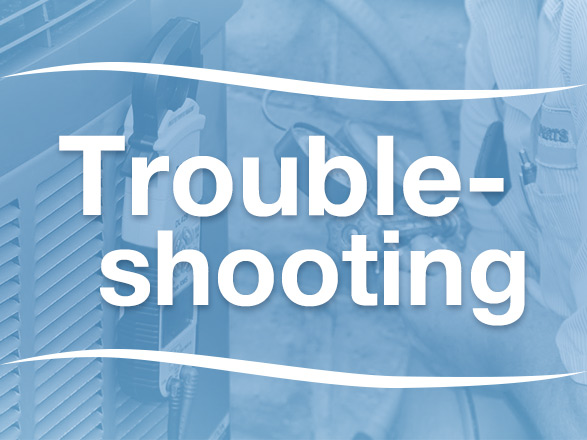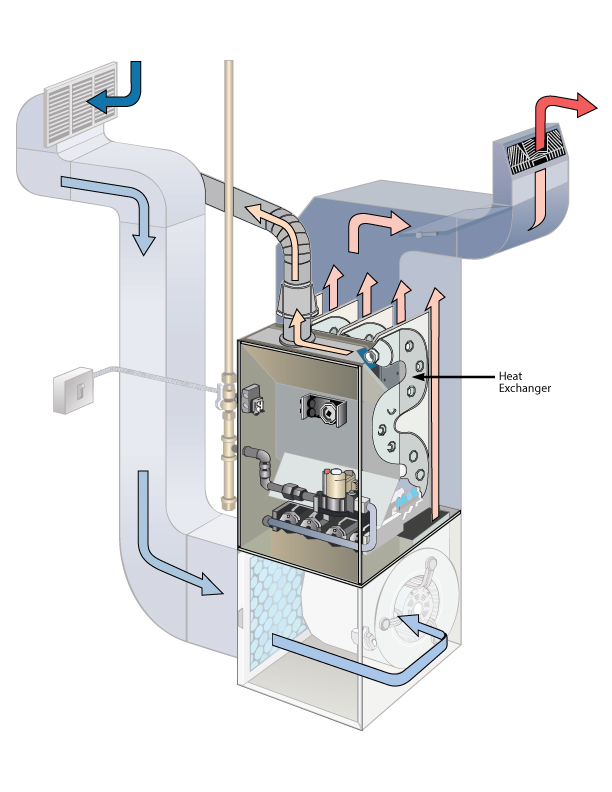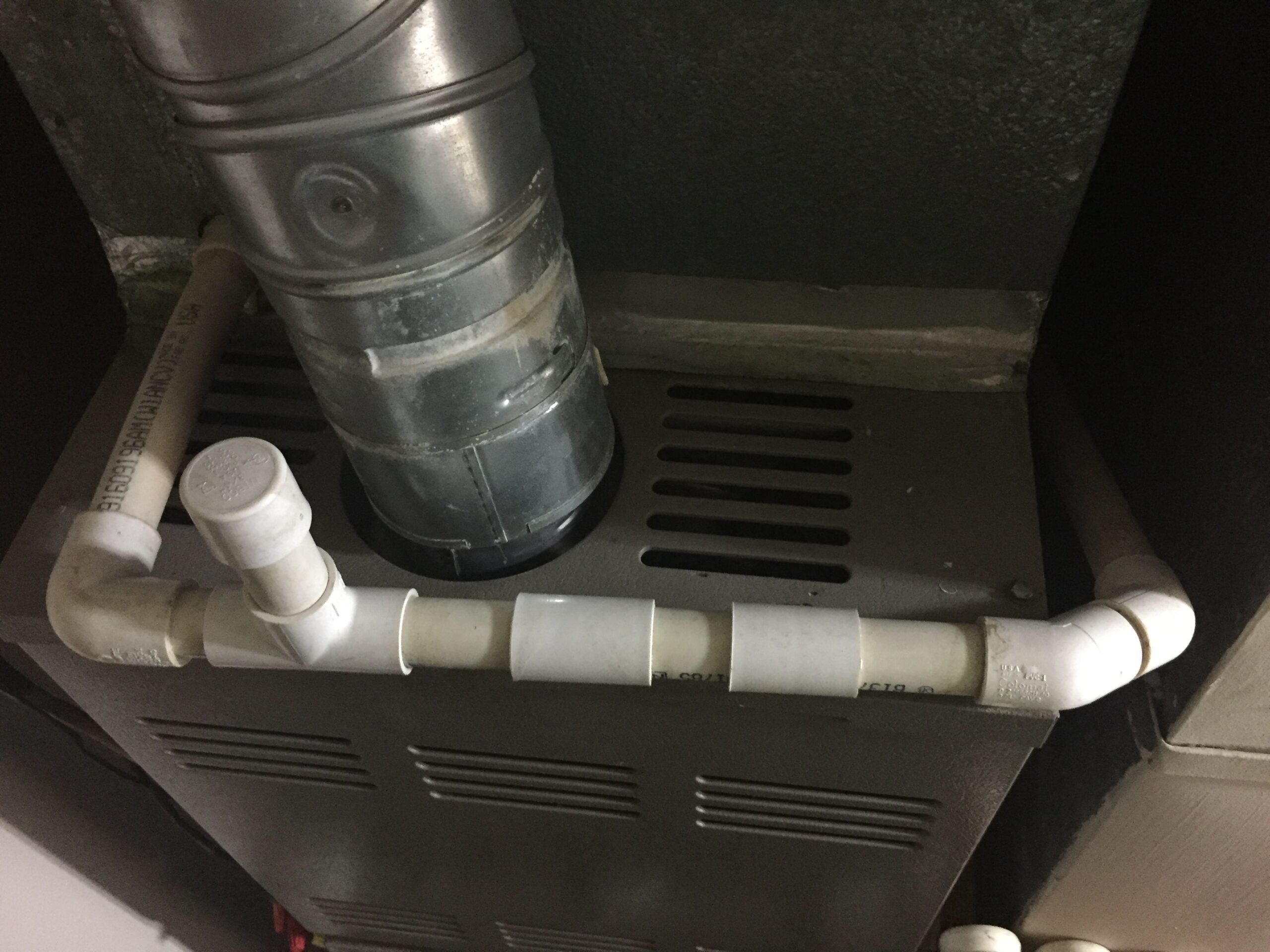Why Is My Furnace Leaking Water? A NJ Tech Explains
November 08, 2024

Is water leaking at the base of your furnace? Don’t panic—we'll help you troubleshoot this issue.
If you don't think you're capable of doing this, our New Jersey techs can help.
Here’s the first thing we need to determine: Is your furnace a high-efficiency condensing furnace or a conventional furnace?
Here’s how to tell from a glance:
- If you see a white PVC vent pipe coming out of the side or top of your furnace, you have a high-efficiency condensing furnace.
- If you see a metal vent pipe instead, you have a conventional furnace.
Have a high-efficiency furnace? Read our first section titled, “Why your high-efficiency furnace is leaking water”.
Have a conventional furnace? Skip to the second section titled, “Why your conventional (non-condensing) furnace is leaking water”.
Why your high-efficiency condensing furnace is leaking water
First off, consider yourself lucky. It’s normal for high-efficiency furnaces to create condensation during its operation process (hence its name “condensing furnace”) so the leakage most likely requires a minor repair.
The most common reasons that condensing furnaces start leaking include:
- Blocked condensate drains
- Condensate pump problems
- Issues with the condensation line
In this section, we’ll:
- Explain why high-efficiency furnaces create water
- Describe how to fix the above-mentioned problems
Why high-efficiency furnaces produce water
High-efficiency furnaces create water because they have two heat exchangers, one more than a conventional furnace. The two heat exchangers absorb so much heat that the exhaust gas changes from a gas state to a liquid state. Condensation forms and then drains out through the condensate line.
Your furnace must be properly serviced so it can properly drain the water that condensates. If there’s any leak or clog, the condensation can’t be carried out of your home and ends up pooling around your furnace.

A furnace heat exchanger
How do I fix this leak?
So your high-efficiency furnace is leaking. Now what? First, check the drain trap to see if it’s clogged. The drain trap collects dirt and water over time. If it’s clogged, you can use a shop vac to clear it.
But if the condensate pump, humidifier, or drain line is broken, you’ll need to schedule a repair with a technician.
If you’re not sure about the cause, one of our expert New Jersey technicians can diagnose your furnace for you. Schedule a diagnosis today if you live in our service area.
Why your conventional (non-condensing) furnace is leaking water
If your conventional furnace is leaking water, it’s most likely because of 1 of these 3 reasons:
- Leaky humidifier
- Improperly designed vent pipe
- Furnace is leaking when AC is on
1. Leaky humidifier
If your furnace has a built-in humidifier, and the humidifier is clogged or has a leak somewhere in it, then that could explain the water pooled around your furnace.
You see, humidifiers need water to create humidity, so water is constantly flowing into it and draining out of it as the humidifier adds moisture to your home’s air.
To determine if you have a leaky or clogged humidifier, follow these steps:
- Check your furnace to see if you have a built-in humidifier. It’s usually easily visible on the outside of the furnace.
- Look for leaks or a clog at the water tap line, drain line, water feed tube and the outside casing of the humidifier.
- Call a professional if the humidifier is leaking or clogged. Didn’t find any leaks and don’t think your humidifier is clogged? Then move on to the next section.
2. Improperly designed vent pipe
Like we mentioned in the beginning, a conventional (non-condensing) furnace has a metal flue pipe.
The purpose of the flue pipe is to safely carry away gases produced during the combustion process out of your home. If everything is working properly in your furnace, those gases are supposed to escape outdoors before they have time to cool down and condense into moisture.
However, if your exhaust pipe is too big or it has no slope, it allows too much air to circulate and traps the gases in the flue. As the gases sit in the flue they cool, eventually forming condensation which can leak out of your furnace into the surrounding area.
To see if the issue is the vent pipe, follow these steps:
- Look at your flue pipe. Do you notice water leaking from it? Or is there no slope?
- Contact a professional if you answered “yes” to either of those questions. They’ll inspect your vent pipe to make sure it has a diameter and design that matches your furnace. They can also repair any leaks you may have found.
Don’t think your vent pipe is the problem? Then read on...
3. Furnace is leaking when AC is on
If your furnace only seems to leak when the air conditioner is running, the problem probably isn’t your furnace—it’s your AC.
You see, your air conditioner doesn’t just cool your home, it dehumidifies it too. As your AC runs, it absorbs moisture from the warm air in your home.
Now, this moisture usually drains out of your home via a condensate drain line (the white PVC pipe in the image below). But if the drain line is clogged or there’s a leak in the line, drain pan or the AC itself, then water can leak into the surrounding area.

An AC condensate drain line—look here for leaks
But here’s the thing: that drain line is most likely sitting on top of (or next to) your furnace—making it seem like the furnace is leaking when it’s actually a leaky/clogged AC drain line.
To determine that your AC is the problem, follow these steps:
- Verify that you’re using your AC and NOT your furnace. (If you haven’t recently cooled your home, then the AC isn’t going to be the problem and you’ll need a professional to diagnose your system.)
- If you have used your AC, try to find the source of the leak by looking at the drain pan and condensate line.
- Conact an HVAC professional to fix the leak once you’ve located it.
Still not sure why your furnace is leaking? Call a New Jersey tech
Live in our service area? If so, we’re happy to help.
Just schedule an appointment and we’ll quickly send over one of our techs to stop your furnace from leaking.
